& Construction

Integrated BIM tools, including Revit, AutoCAD, and Civil 3D
& Manufacturing

Professional CAD/CAM tools built on Inventor and AutoCAD

Integrated BIM tools, including Revit, AutoCAD, and Civil 3D

Professional CAD/CAM tools built on Inventor and AutoCAD
Transcript
00:03
When performing a Multi Solute Water Quality simulation, after the MSQ model has been set up using the Solute Data Object dialog,
00:12
and after the network has been dosed with the contaminants, you can configure and run the MSQ simulation.
00:19
To start, create a new run group.
00:22
From the Model Group, right-click the MSQ Model and select New > Run Group.
00:29
In the popup, name it “Run Group” and then click OK.
00:33
Then right-click the Run Group and select New > Run.
00:38
In the Schedule Hydraulic Run dialog box, name simulation “MSQ Example”, which is the same name as the new solute data.
00:46
Also enable the Experimental option.
00:50
Then, from the Model Group, drag and drop the MSQ Network, Control, and Demand Diagram into their respective boxes.
00:58
Set the run time to go from May 2nd, 2022 at 00:00 until May 4th, 2022 at 00:00.
01:06
In the Run Type group box, expand the drop-down and pick Water Quality.
01:11
With the Water Quality Options dialog open, click and drag the MSQ Example solute data into the Solute group box.
01:19
Set the stagnant threshold to 0.01 l/s.
01:25
The stagnant threshold is the computational accuracy for water quality calculations.
01:31
If you leave it set to zero, it will use the computational accuracy of the hydraulic simulation.
01:37
Note that, if you close the Water Quality Options dialog,
01:41
you can easily reopen it by clicking the Options button in the Run Type group box.
01:46
Click OK.
01:48
Back in the Schedule Hydraulic Run dialog, click Save and then Run.
01:54
In the Model Group, the simulation results now appear under the MSQ Example run.
02:00
Click and drag the results to the GeoPlan.
02:04
In the Tools toolbar, click the Find Network Objects tool.
02:08
In the Wildcard text box enter the NodeID ST26366402.
02:19
Close the Network Find window.
02:23
Then, click the Graph Selected Objects tool.
02:28
In the Graph Selection dialog, in the Left Group Box, select Concentration 01 A, and then in the Right Group Box, select Concentration 02 B.
02:39
Click OK.
02:41
On the graph, you can see the concentration of the two contaminants at the point below the reservoir across the simulation.
02:48
Repeat this process for Node ST28366403.
02:55
To see how Contaminant A and B react to form Contaminant C across the network,
02:60
double-click the Contaminant C theme
03:02
and play through the simulation to visualize the movement of Contaminant C through the network over time.
Video transcript
00:03
When performing a Multi Solute Water Quality simulation, after the MSQ model has been set up using the Solute Data Object dialog,
00:12
and after the network has been dosed with the contaminants, you can configure and run the MSQ simulation.
00:19
To start, create a new run group.
00:22
From the Model Group, right-click the MSQ Model and select New > Run Group.
00:29
In the popup, name it “Run Group” and then click OK.
00:33
Then right-click the Run Group and select New > Run.
00:38
In the Schedule Hydraulic Run dialog box, name simulation “MSQ Example”, which is the same name as the new solute data.
00:46
Also enable the Experimental option.
00:50
Then, from the Model Group, drag and drop the MSQ Network, Control, and Demand Diagram into their respective boxes.
00:58
Set the run time to go from May 2nd, 2022 at 00:00 until May 4th, 2022 at 00:00.
01:06
In the Run Type group box, expand the drop-down and pick Water Quality.
01:11
With the Water Quality Options dialog open, click and drag the MSQ Example solute data into the Solute group box.
01:19
Set the stagnant threshold to 0.01 l/s.
01:25
The stagnant threshold is the computational accuracy for water quality calculations.
01:31
If you leave it set to zero, it will use the computational accuracy of the hydraulic simulation.
01:37
Note that, if you close the Water Quality Options dialog,
01:41
you can easily reopen it by clicking the Options button in the Run Type group box.
01:46
Click OK.
01:48
Back in the Schedule Hydraulic Run dialog, click Save and then Run.
01:54
In the Model Group, the simulation results now appear under the MSQ Example run.
02:00
Click and drag the results to the GeoPlan.
02:04
In the Tools toolbar, click the Find Network Objects tool.
02:08
In the Wildcard text box enter the NodeID ST26366402.
02:19
Close the Network Find window.
02:23
Then, click the Graph Selected Objects tool.
02:28
In the Graph Selection dialog, in the Left Group Box, select Concentration 01 A, and then in the Right Group Box, select Concentration 02 B.
02:39
Click OK.
02:41
On the graph, you can see the concentration of the two contaminants at the point below the reservoir across the simulation.
02:48
Repeat this process for Node ST28366403.
02:55
To see how Contaminant A and B react to form Contaminant C across the network,
02:60
double-click the Contaminant C theme
03:02
and play through the simulation to visualize the movement of Contaminant C through the network over time.
When performing a multi solute water quality simulation, after the MSQ model has been set up using the Solute Data Object dialog box, and after the network has been dosed with the contaminants, you can configure and run the MSQ simulation.
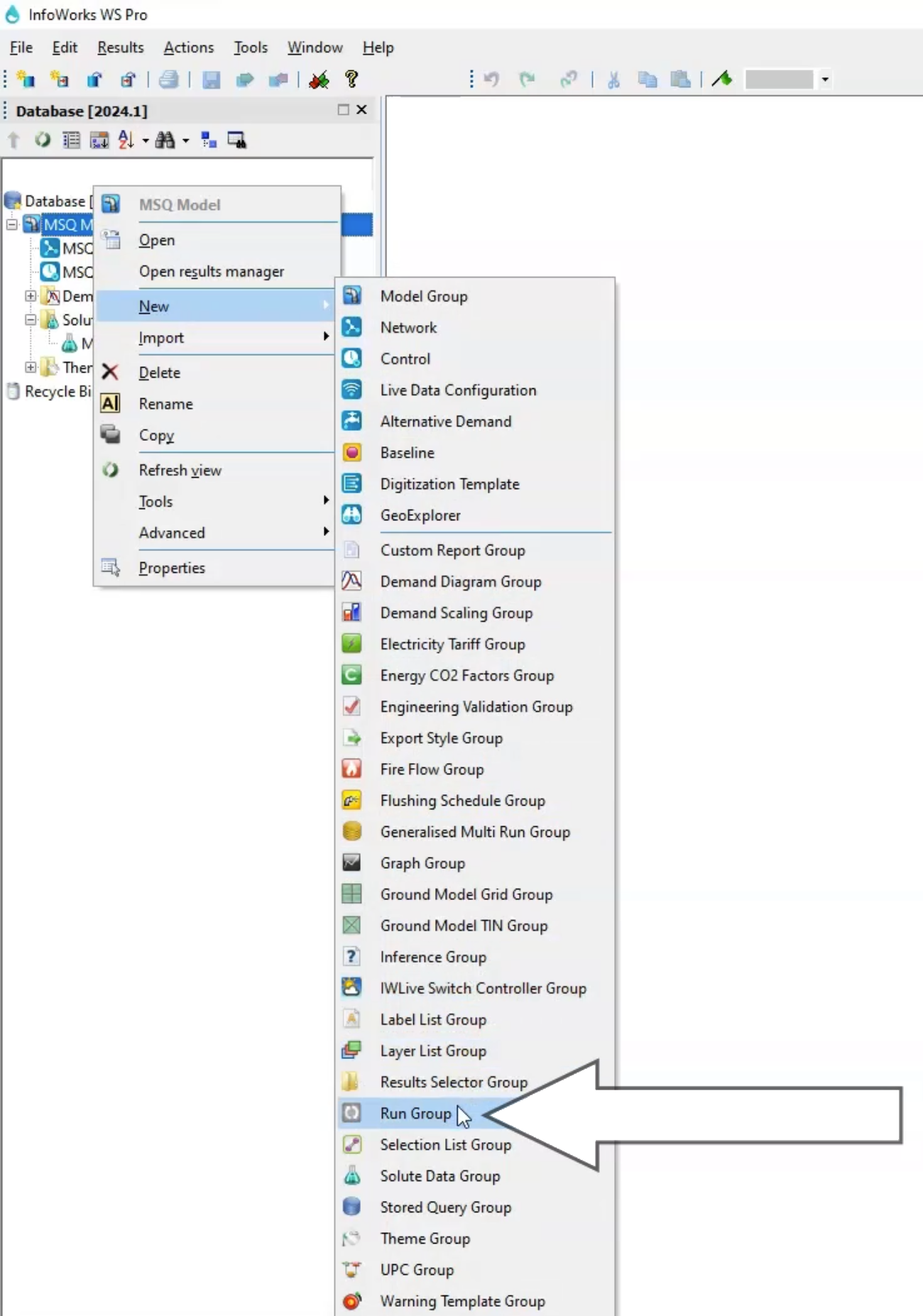
The Control and Demand Diagram boxes populate automatically.
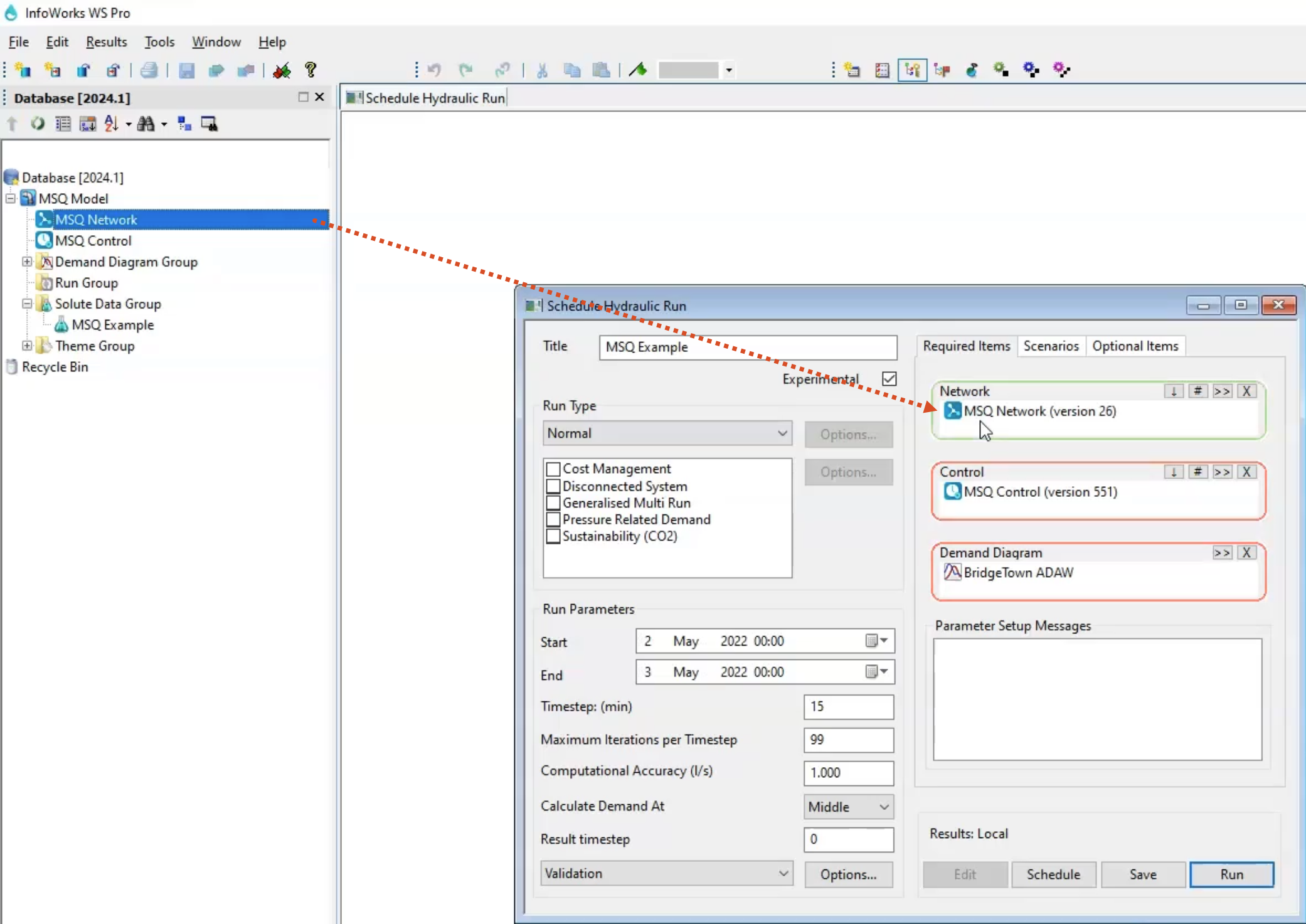
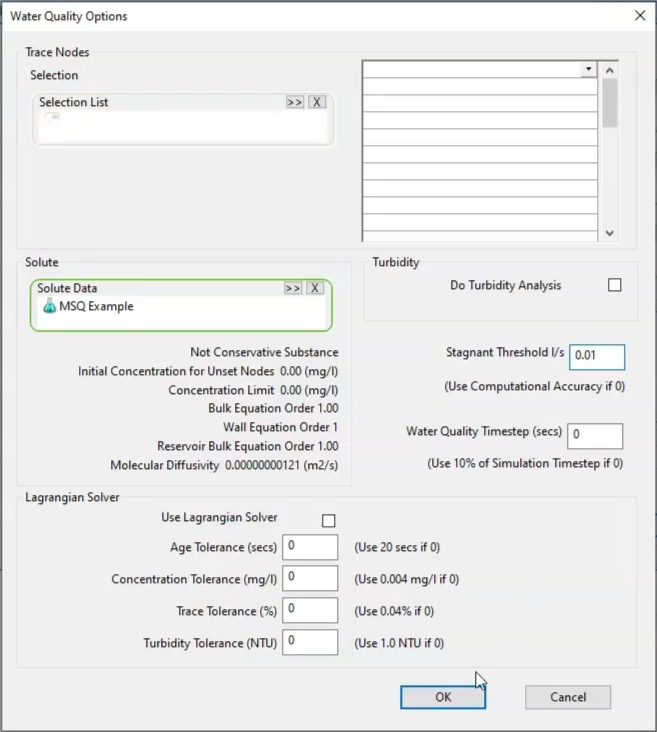
Note that you can reopen the Water Quality Options dialog box from the Schedule Hydraulic Run dialog box, Run Type group box, by clicking the Options button.
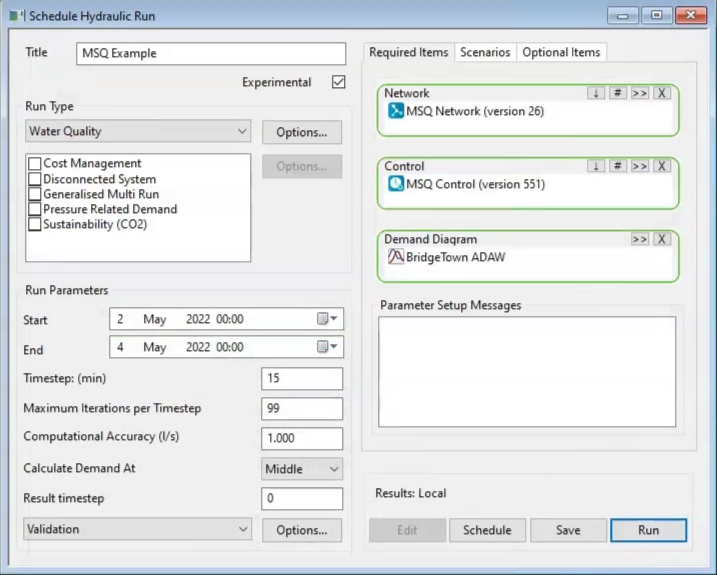
In the Model Group, the simulation results now appear under the MSQ Example run.
To graph the results:
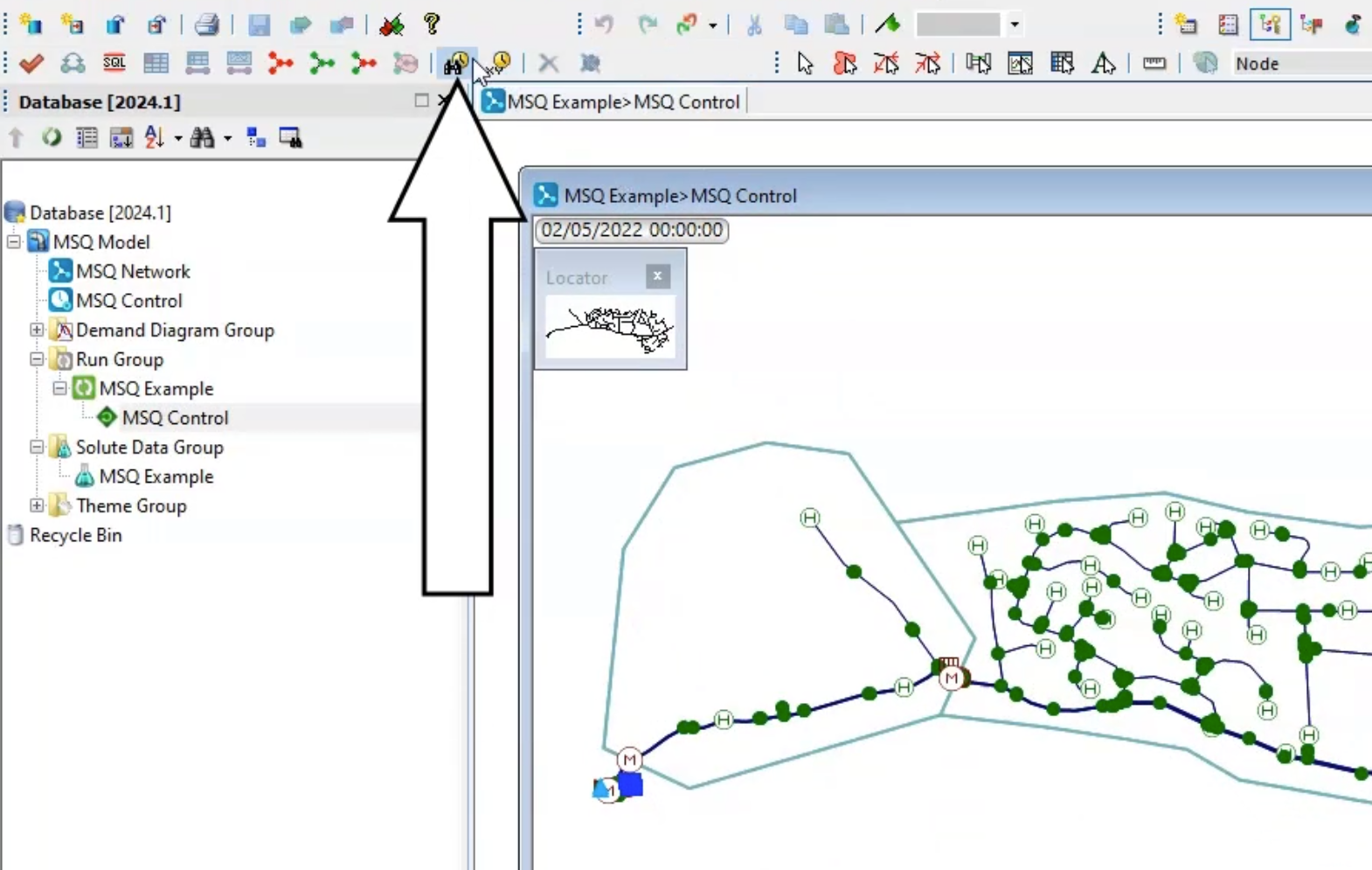
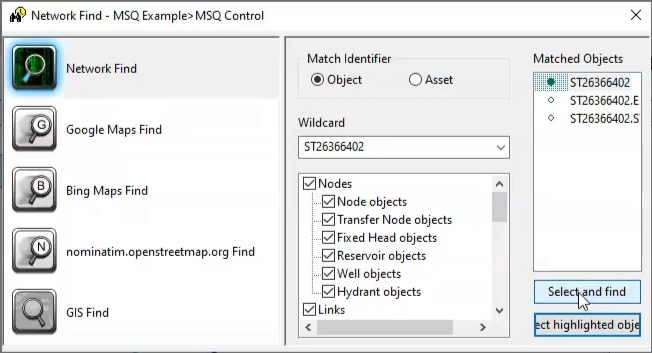
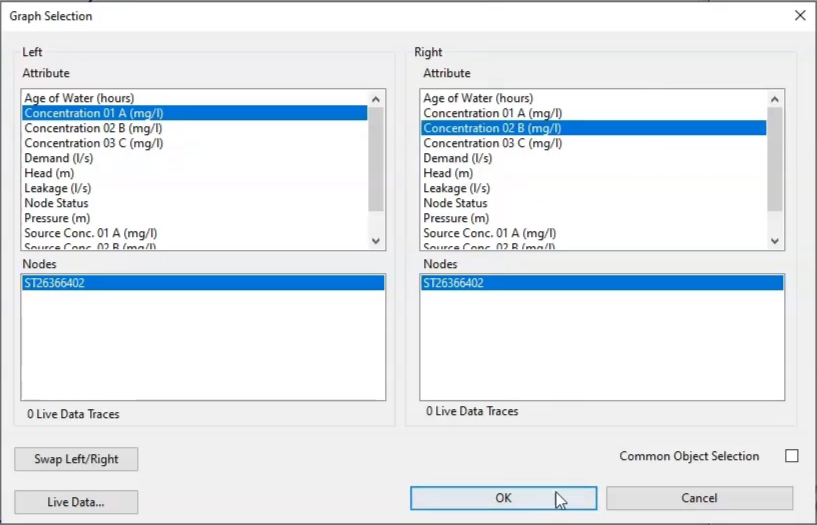
On the graph, you can see the concentration of the two contaminants at the point below the reservoir across the simulation.
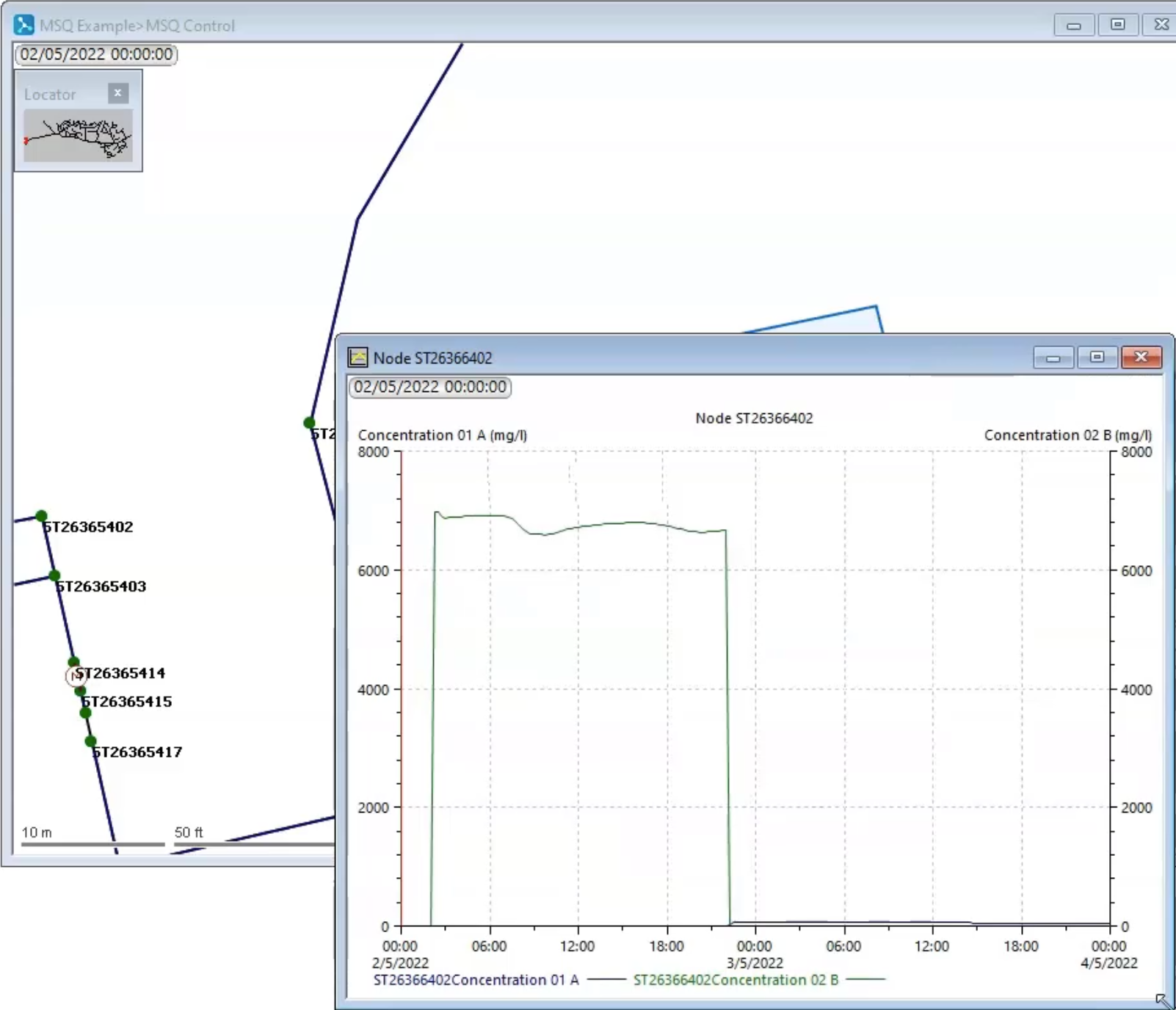
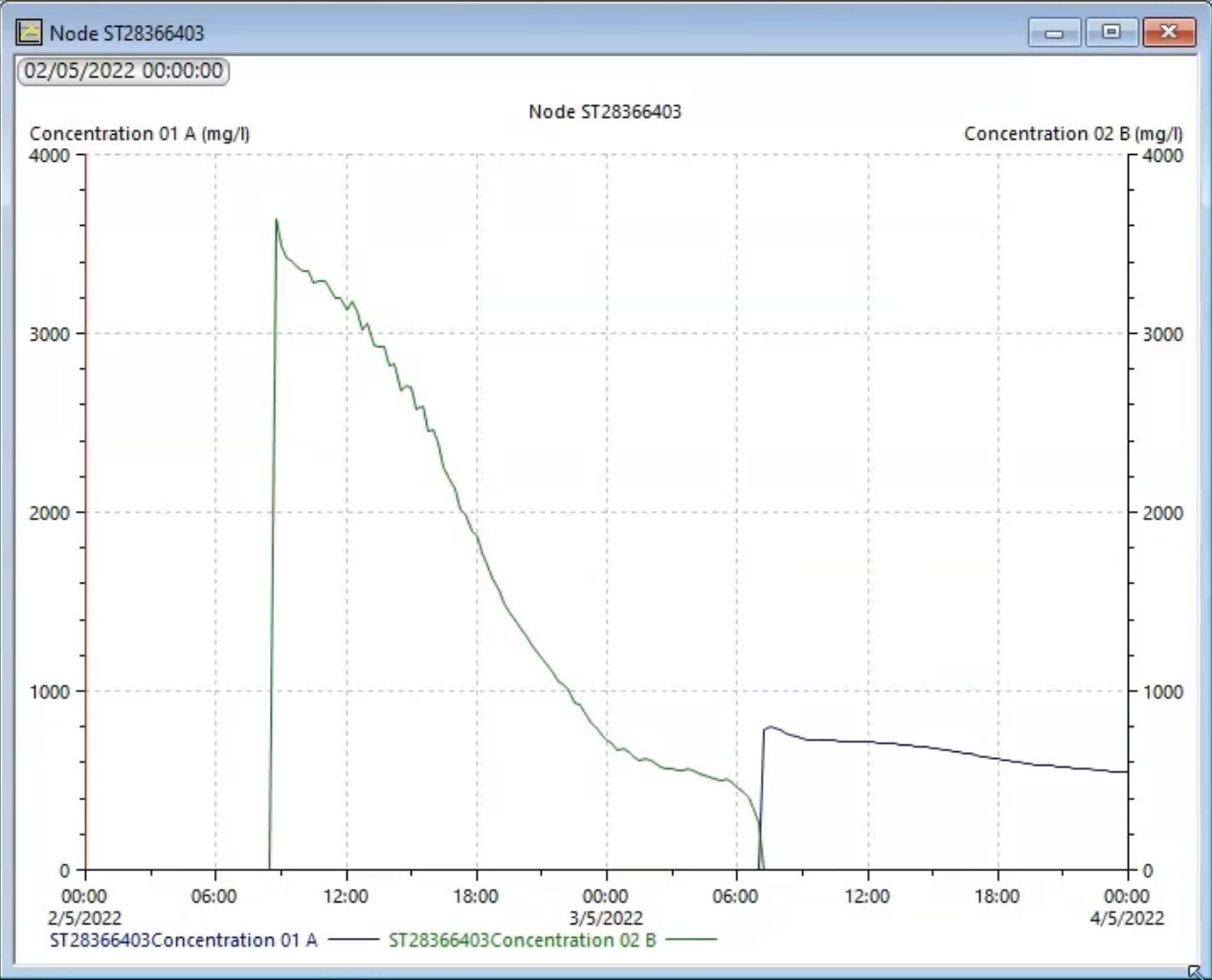
To see how Contaminant A and B react to form Contaminant C across the network:
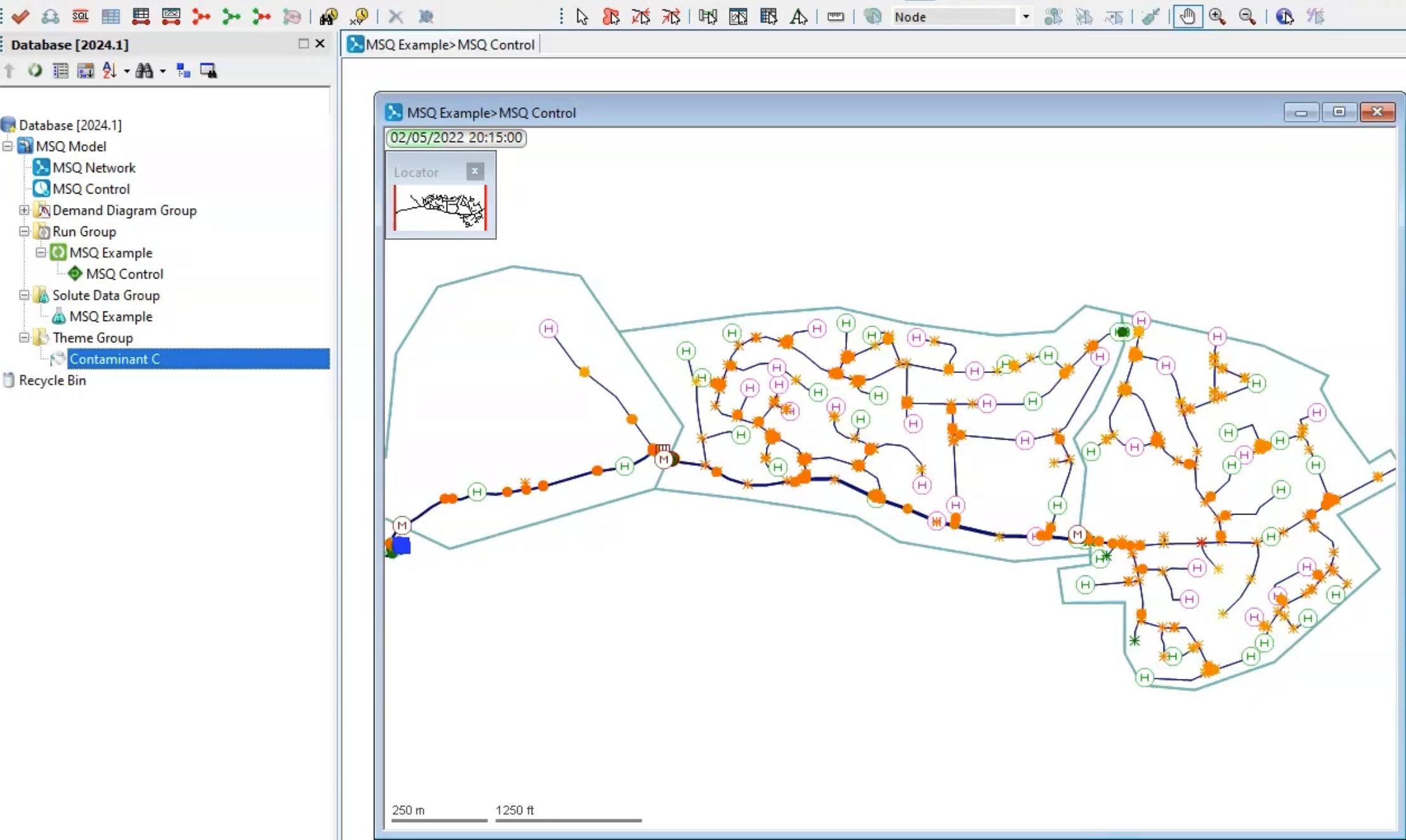
How to buy
Privacy | Do not sell or share my personal information | Cookie preferences | Report noncompliance | Terms of use | Legal | © 2025 Autodesk Inc. All rights reserved
Sign in to start learning
Sign in for unlimited free access to all learning content.Save your progress
Take assessments
Receive personalized recommendations
May we collect and use your data?
Learn more about the Third Party Services we use and our Privacy Statement.May we collect and use your data to tailor your experience?
Explore the benefits of a customized experience by managing your privacy settings for this site or visit our Privacy Statement to learn more about your options.